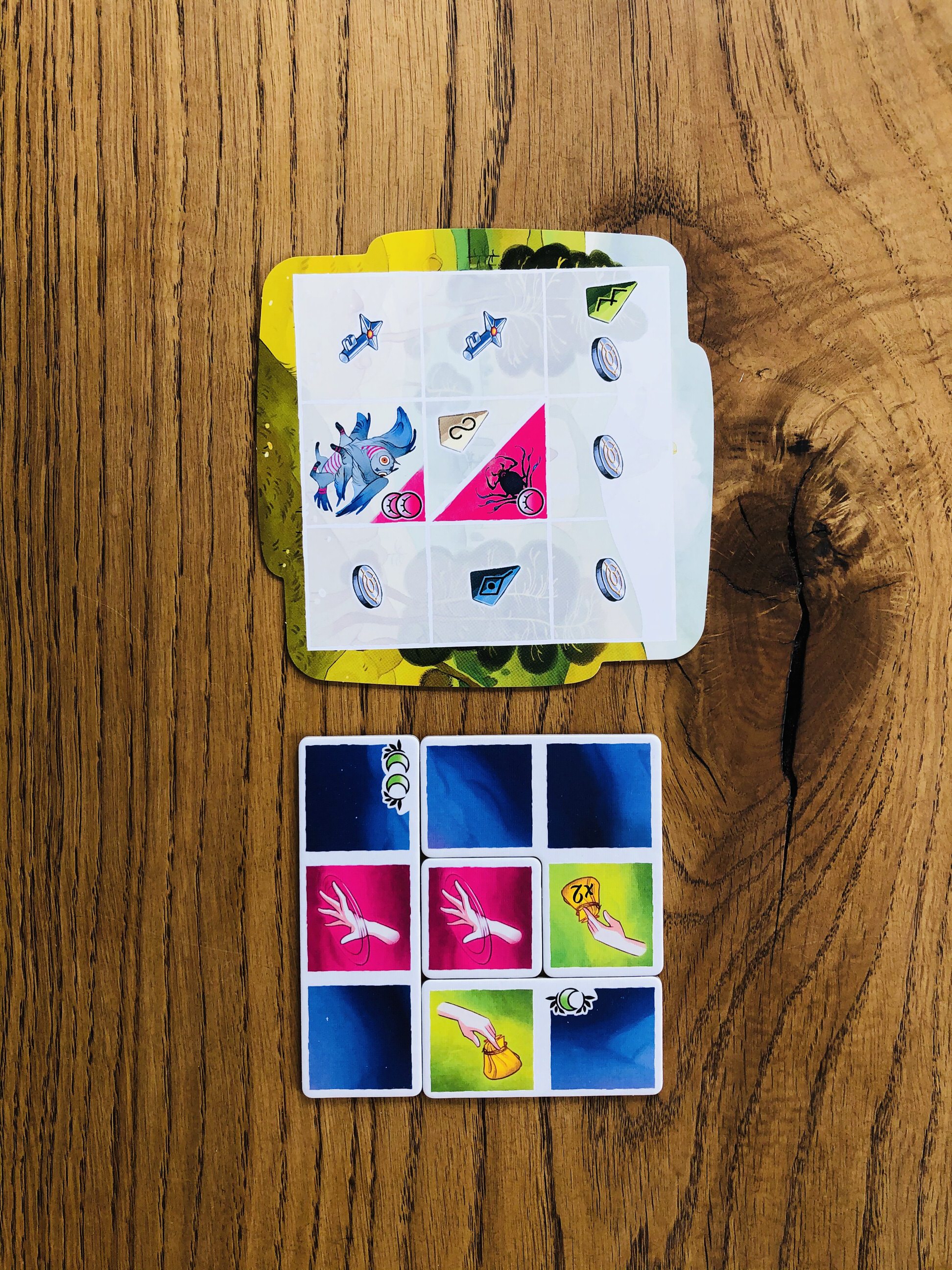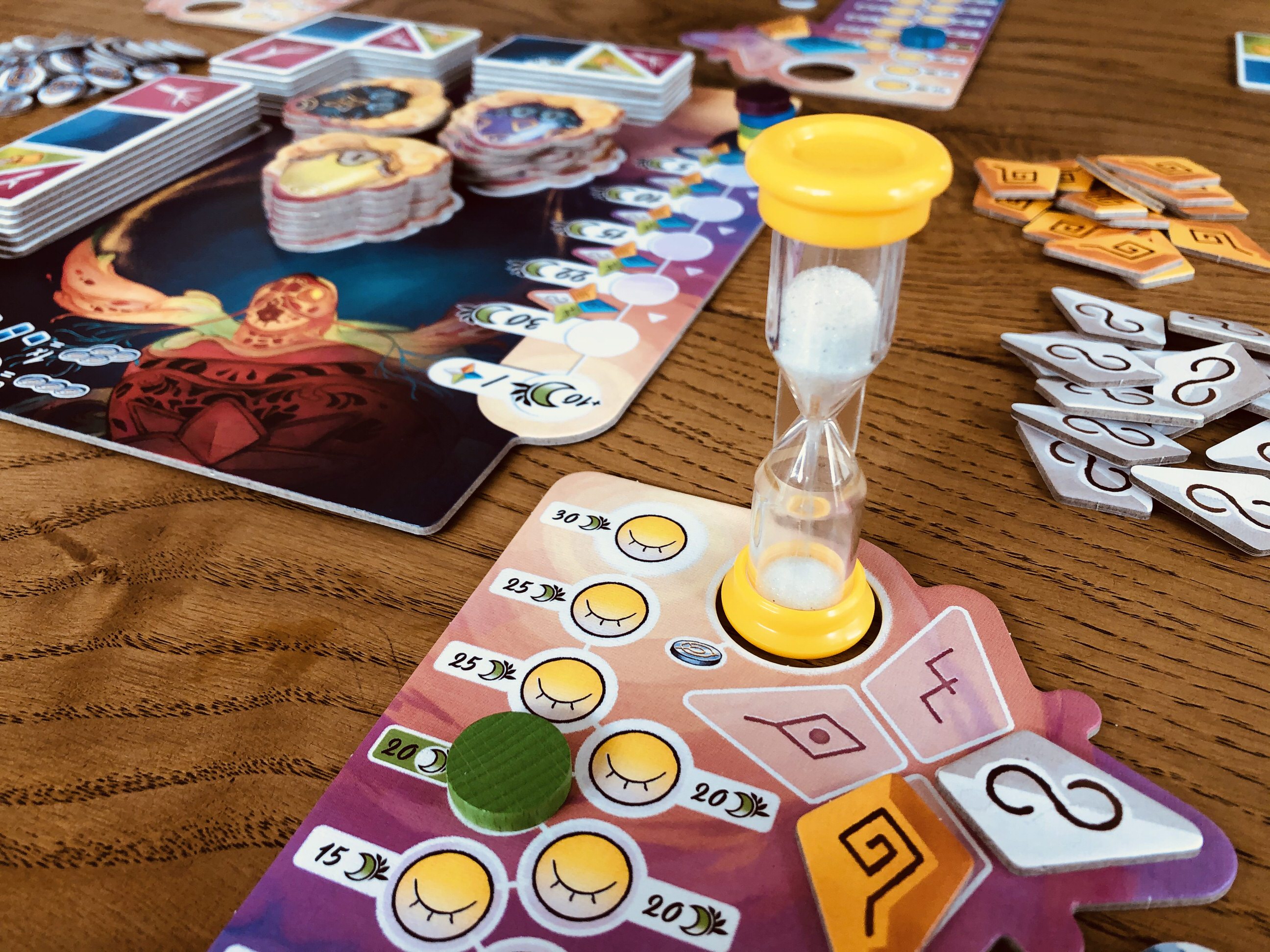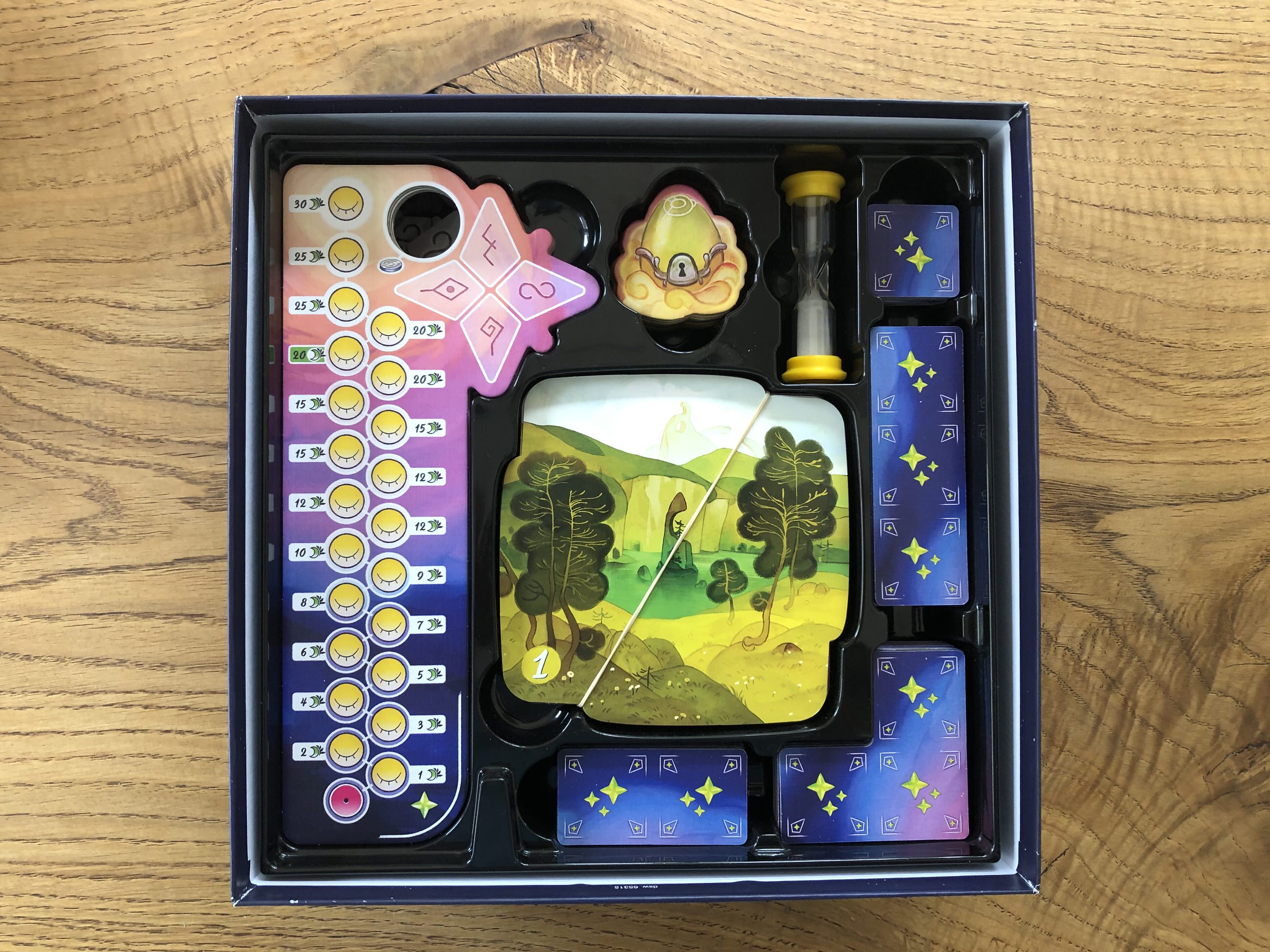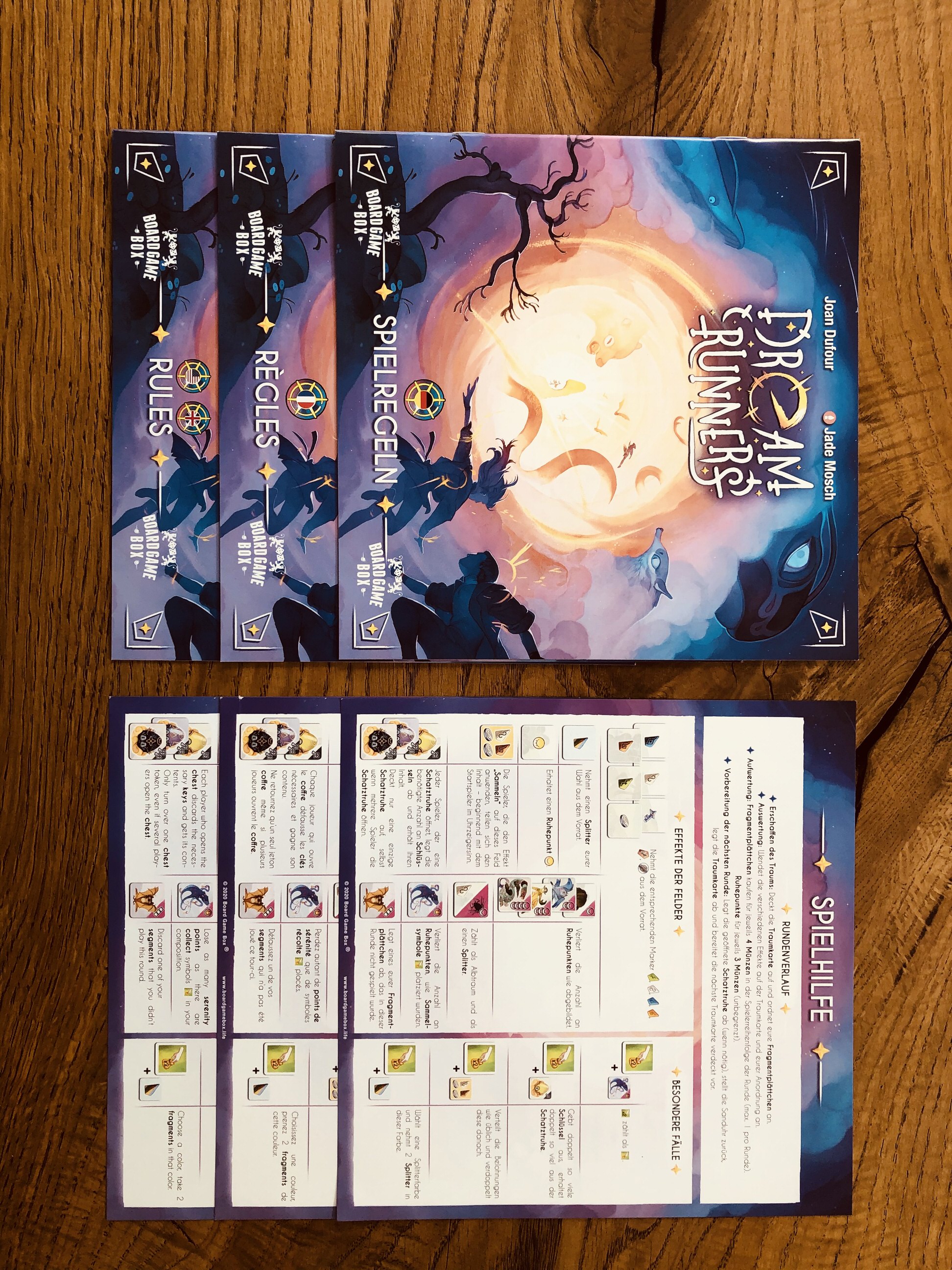
Dream Runners
"It must have been early evening when the sky suddenly turned dark. A short time later, lightning twitched wildly to my left and right. The thunder rumbled deafeningly. I tried to run, but could only stop rooted to the spot when I saw the huge thing in front of me. The tentacle-like arms, the fiery red eyes, the whole appearance of the huge being in front of me in the thunderstorm confirmed my premonition: I was in the middle of a nightmare - I could not prevent it and thus came a big step closer to waking up. It's time to focus on the next steps, because I am the architect of my dream" - in Dream Runners the new game by Joan Dufour from BOARD GAME BOX.
In Dream Runners, two to four players try to banish their nightmares in eight rounds and collect as many resources and, above all, dream points as possible. To do this, players only have to puzzle together four fragment tiles (sometimes more later) to form a 3x3 grid. A dream card drawn in each round determines what happens on the individual fields of the grid. That really shouldn't be a problem, should it?
Ready for the night
At the beginning, each player gets the four fragment tokens of his color, a field of rest and two coins. In addition, two point markers, one of which is placed on the serenity board and one on the star scale (field 20) on the field of rest. Then eight more dream tiles are placed face down and ready in ascending color order:
- 2 x level 4 (red)
- 2 x level 3 (blue)
- 2 x level 2 (purple)
- 2 x level 1 (green)
For the first rounds, the dream tiles marked with an asterisk should be sorted out. The inclined frequent player will think at the latest at this point: nice material, everything colorful, this will be a piece of cake. The impression is then perhaps confirmed in the first and second round, but then ...
Dream architecture
At the beginning of each round, a dream card is revealed and placed in the center of the table, clearly visible to all. Now all players try to puzzle a corresponding 3x3 grid with their segment tiles. Resources and nightmares are shown on the squares of the dream card. Resources can be collected and nightmares should be warded off. The 3x3 grid does not have to be completely laid out. Also individual parts may protrude, but this has a negative effect on the score. So far all no problem, but: whoever is the first to be satisfied with his puzzled dream grabs the hourglass and places it on his field of rest. This is the point at which even the most inclined frequent player feels a small attack of panic. Puzzling under time pressure is no longer quite so easy!
Dreamt out
Once the sand has run through, the round ends for the remaining players and the scoring begins. The players lose one rest point each,
- for each square that is missing from the 3x3 grid
- for each square that goes beyond the 3x3 grid
- for each nightmare that could not be averted
Players receive the reward shown (star shards, rest points, keys and coins) for a green collection symbol. Once you have collected four different star shards, you move forward one space on the star scale on the game board. With collected key tokens you can open treasure chests in the next round, which are also depicted on the dream cards.
After all players have taken their resources from the supply and distributed the points, it is possible to buy rest points and additional fragment tiles. You should always keep an eye on the shape of the fragment and the fields shown. Not every fragment necessarily fits into your own supply. Then a new round starts with the uncovering of a new dream tile. As soon as the eighth dream tile has been revealed, the final evaluation follows after the evaluation and upgrade. All dream points on segment tiles, the position on the star scale on the game board and the rest points on the field of rest are added up. The player with the most points wins.
Sleep well?
Dream Runners is a tactical puzzle game for the whole family that provides entertaining fun. The rules of the game and the process are quickly learned thanks to the good rule booklet and the game help, although the numerous materials at first suggest otherwise. The difficulty level of the dream cards increases from round to round and increases the pressure on the players. However, it gets really tingly as soon as a player reaches for the hourglass. For younger children (< 10 years), the other players should sometimes turn a blind eye to the use of the hourglass.
The game mechanism remains the same in every round, but the different dream tiles and the puzzles under time pressure ensure that the colorfully designed box is always a pleasure to take out of the cupboard - and not only in the family.
Dream Runners was kindly provided to us free of charge by Board Game Box. This has no influence on our rating.








Leave a comment